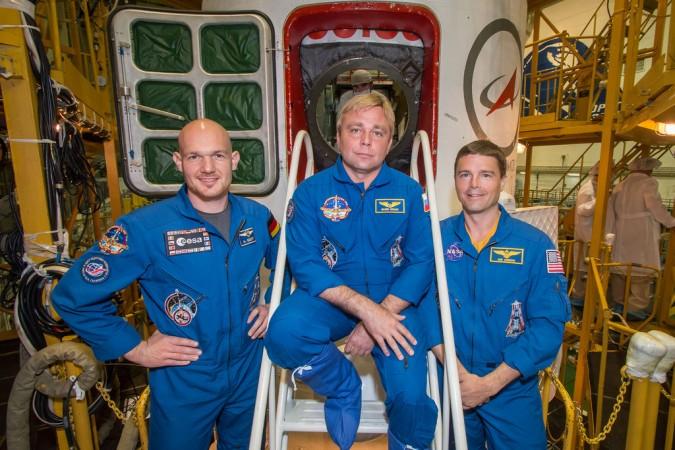
The Expedition 40 crew members who are currently aboard the International Space Station (ISS) will be joined by three new spaceflyers on Wednesday, 28 May 2014.
NASA's Reid Wiseman, cosmonaut Maxim Suraev and European Space Agency astronaut Alexander Gerst will be launched aboard the Soyuz TMA-13M spacecraft, which is set to lift off from the Baikonur Cosmodrome in Kazakhstan, the Central Asian Nation.
The launch will begin at 3:57 pm EDT (1957 GMT) on Wednesday i.e., 12:57 am IST on Thursday, 29 May 2014. The live webcast from NASA TV will begin on Wednesday at 3 pm EDT (1900 GMT) or Thursday 12:00 am IST, according to NASA.
About six hours later, at 9:48 pm EDT, Soyuz TMA-13M commander Suraev will dock the spacecraft to the Rassvet module. The three astronauts, NASA's cosmonauts Alexander Skvortsov, Oleg Artemyev and astronaut Steve Swanson already onboard the Space station since 27 March 2014, will welcome the new crew members when the hatches of both the spacecrafts open at 11:25 pm EDT. The NASA live coverage will resume at 9 pm for the docking, followed by hatch opening coverage at 11 pm.
The already onboard Expedition 40 is led by Swanson, who serving as its commander. Prior to the arrival of the trio astronauts, Swanson, Skvortsov and Artemyev have had performed science maintenance and experiments on the Space Station, according to the space agency.
Check out the NASA TV live streaming of the launch of the Soyuz TMA-13M spacecraft here.
Swanson, the lead astronaut of the Expedition 40 had taken part in two science experiments; Sprint VO2 exercise experiment and Skin-B investigation. The Sprint VO2 exercise examines low duration, high-intensity exercise techniques with the help of a resistance device. Instead of exercising for six days every week, crew members are now studying on doing it three day a week that involves more intense regimen. The benefits of cardiovascular were also explored from the aerobic training while trying to reduce muscle and bone loss.
Swanson's Skin-B investigation observed the skin's ability to regenerate and adapt in space and compare it to other human organs that adapts to weightlessness. The European Space Agency (ESA), lead investigator for the skin investigation is studying the speedy aging that is observed in a crew member's skin in space.
The commander checked the water and light levels for a new experiment onboard the orbital laboratory that studies salad-type plants suitable for consumption by future crew members. The harvesting of the veggies is expected to provide nutritious, palatable and fresh food. However, in order to find out suitability for prospective crew, the harvested crop will be preserved in a freezer for ground scientists to analyze.
NASA is currently working on a project, called High Definition Earth Viewing (HDEV) experiment that tests the performance of cameras in the space environment. Four high-definition commercial video cameras is providing live-streaming sights of Earth from space, installed in April outside the International Space Station.

















